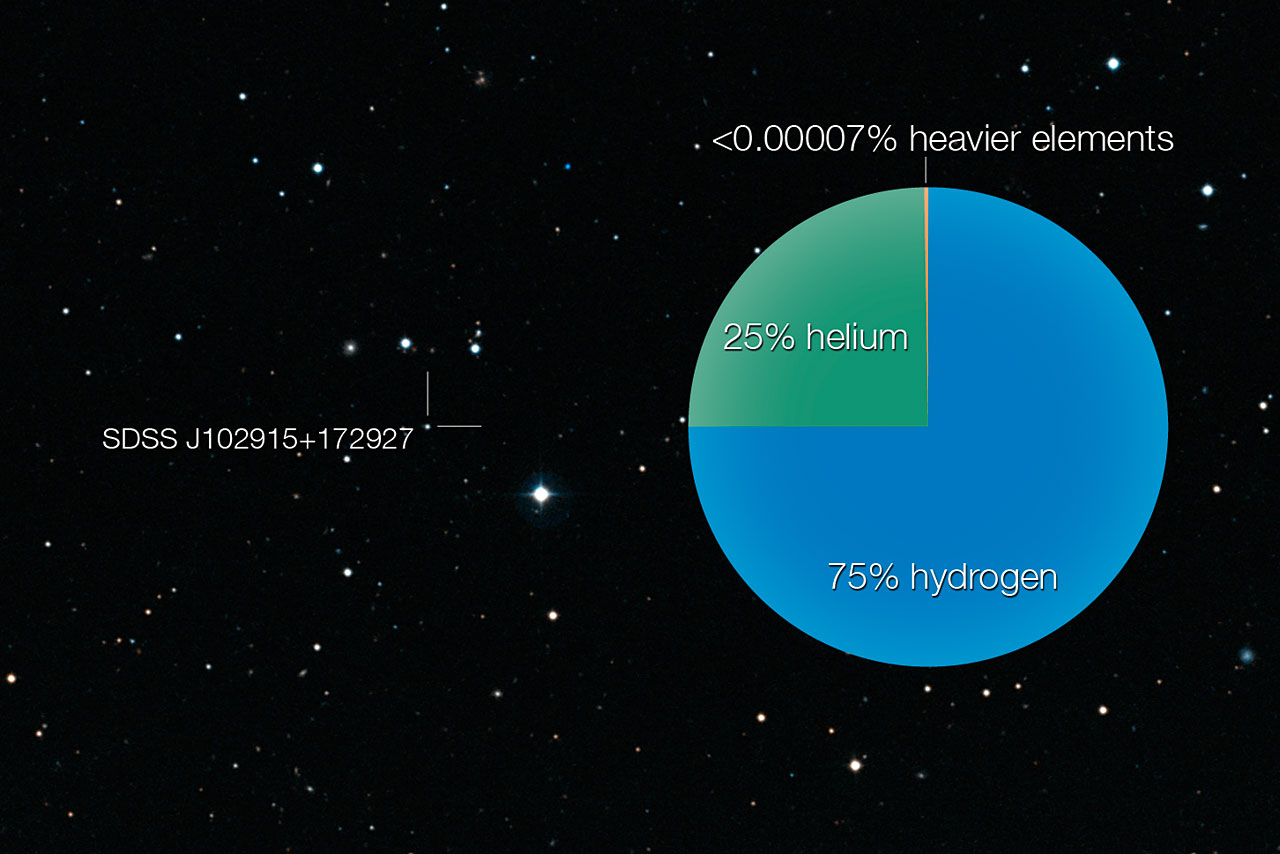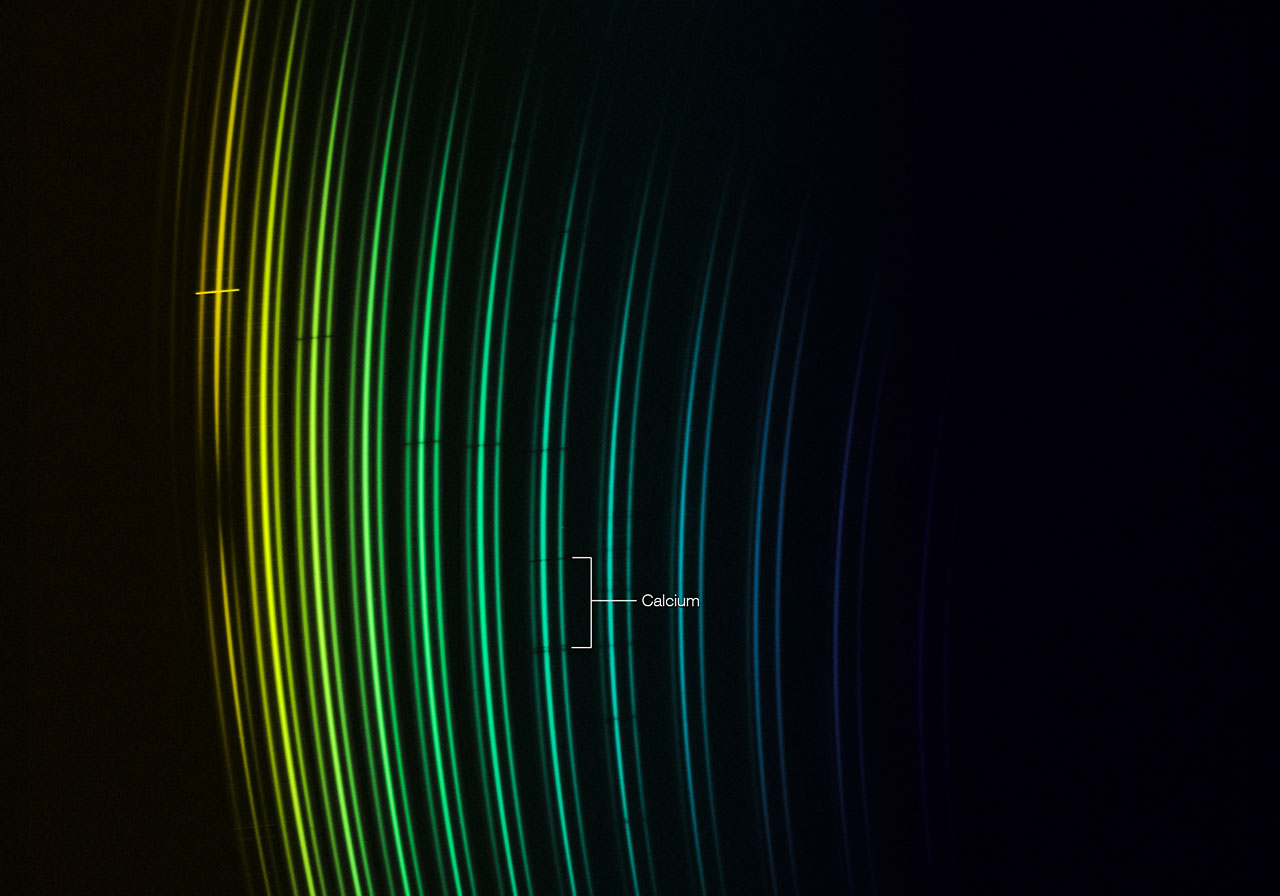SDSS J102915+172927 is in the constellation of Leo. It has a mass smaller than that of the Sun and is probably more than 13 billion years old and has been found to have the lowest amount of elements heavier than helium (what astronomers call "metals") of all stars yet studied.
The mystery? It shouldn't exist.
"A widely accepted theory predicts that stars like this, with low mass and extremely low quantities of metals, shouldn't exist because the clouds of material from which they formed could never have condensed," said Elisabetta Caffau (Zentrum fur Astronomie der Universitat Heidelberg, Germany and Observatoire de Paris, France), lead author of a new paper. "It was surprising to find, for the first time, a star in this 'forbidden zone', and it means we may have to revisit some of the star formation models."
The team analyzed SDSS J102915+172927 using the X-shooter and UVES instruments on the VLT, which allowed them to measure how abundant the various chemical elements were in the star. They found that the proportion of metals in SDSS J102915+172927 is more than 20 000 times smaller than that of the Sun.
An ancient star in the constellation of Leo (The Lion), called SDSS J102915+172927, has been found to have the lowest amount of elements heavier than helium of all stars yet studied. The pie-chart shows the star’s composition: it is almost entirely made from hydrogen and helium with only a tiny trace of heavier elements. Credit:ESO/Digitized Sky Survey 2
The star is faint, and so metal-poor that they could only detect the signature of one element heavier than helium — calcium — in their first observations. Cosmologists believe that the lightest chemical elements — hydrogen and helium — were created shortly after the Big Bang, together with some lithium, while almost all other elements were formed later in stars. Supernova explosions spread the stellar material into the interstellar medium, making it richer in metals. New stars form from this enriched medium so they have higher amounts of metals in their composition than the older stars. Therefore, the proportion of metals in a star tells us how old it is.

The distribution of the light of different colors coming from SDSS J102915+172927 after it has been split up by the X-Shooter instrument on the ESO VLT. Different colors fall in different places in this strange picture and astronomers can use this data to find the chemical signals from different elements within the star, which show up as dark interruptions of the curved lines. The spectrum of the star appears to be triple at each wavelengths as it was split up using an integral field unit to collect as much light as possible. This ancient star has been found to have the lowest amount of elements heavier than helium of all stars yet studied. The only evidence of elements heavier than helium is two dark lines from the element calcium. Credit: ESO/E. Caffau
"The star we have studied is extremely metal-poor, meaning it is very primitive. It could be one of the oldest stars ever found," adds Lorenzo Monaco (ESO, Chile), also involved in the study.
Also very surprising was the lack of lithium in SDSS J102915+172927. Such an old star should have a composition similar to that of the Universe shortly after the Big Bang, with a few more metals in it. But the team found that the proportion of lithium in the star was at least fifty times less than expected in the material produced by the Big Bang.
Wide-field view of the bright constellation of Leo (The Lion) and slowly closes in on what looks like an unremarkable faint star, SDSS J102915+172927, which turns out to have the lowest amount of elements heavier than helium of all stars yet studied. It has a mass smaller than that of the Sun and is probably more than 13 billion years old. Credit: ESO/A. Fujii/Digitized Sky Survey 2. Music: John Dyson (from the album Moonwind)
"It is a mystery how the lithium that formed just after the beginning of the Universe was destroyed in this star." Bonifacio added.
The researchers also point out that this freakish star is probably not unique. "We have identified several more candidate stars that might have metal levels similar to, or even lower than, those in SDSS J102915+172927. We are now planning to observe them with the VLT to see if this is the case," concludes Caffau.






Comments